A firm foundation
The JMU Foundation celebrates its 50th anniversary
JMU in the Community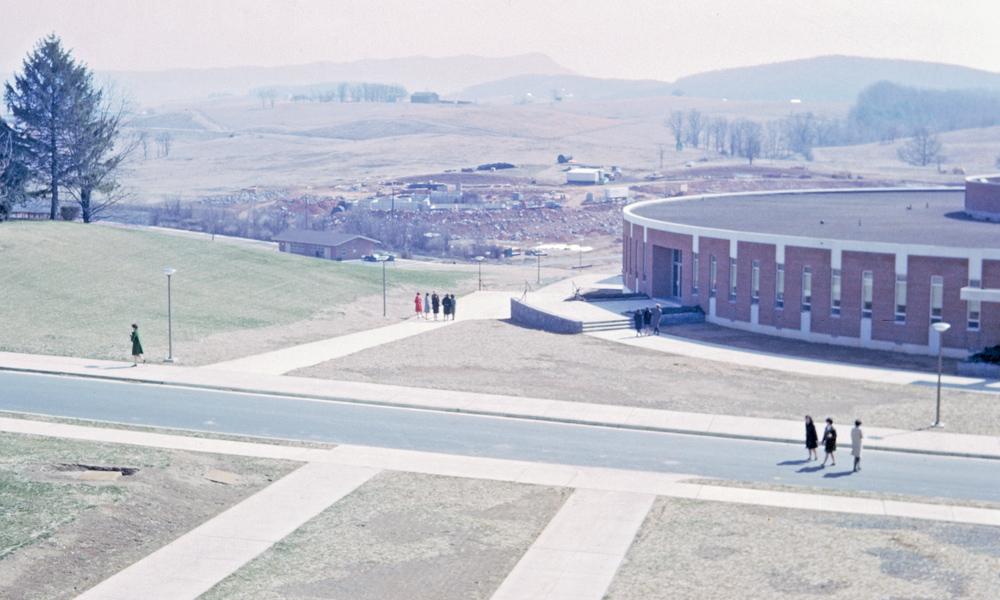
SUMMARY: The James Madison University Foundation is celebrating its 50th anniversary this year. Beyond purchasing properties and growing the university's endowment, the foundation has managed scholarships, curated art collections, purchased scoreboards, supervised student investors, awarded faculty grants, made student loans and ensured a bright future for JMU.
By Martha Bell Graham (’03P, ’08P, ’12P)
By all accounts, Aug. 13, 1969, was a lovely day in the Shenandoah Valley when a small group walked toward Madison College’s Gibbons Hall overlooking what would soon become the “back” campus. President G. Tyler Miller, nearing retirement, and the college’s business manager, Adolph Phillips, headed to the president’s suite to meet alumna Mary MacNeil Willis (’28) and English Professor Louis Locke. What transpired that day would reverberate through campus for the next half-century as the group convened, for the first time, the James Madison University Foundation.*
Earlier that year, Ray V. Sonner, Madison’s director of public services, and Virginia Congressman Burr Harrison, a former JMU Board of Visitors rector and attorney with a lifelong interest in education, acquired the articles of incorporation for the fledgling foundation. Both men understood the college’s future needs. Many state institutions already had significant endowments funded by well-heeled and eager alumni. Madison needed to catch up.
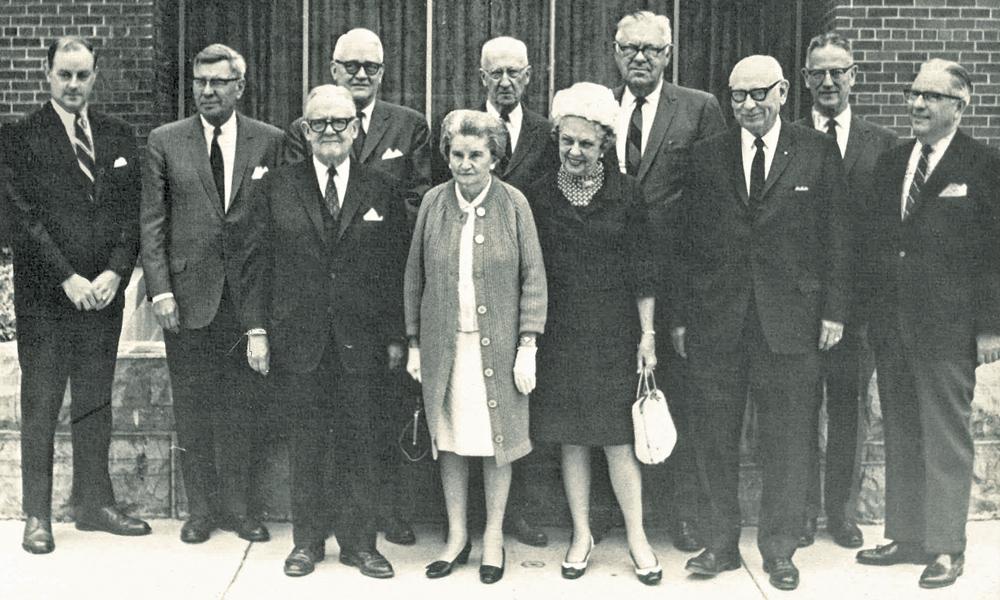 |
| Many campus leaders in 1969-70 served on the Board of Visitors as well as the foundation's board. Front row (L-R): B. Fred Switzer, Emily N. Spong, Helen M. White, G. Tyler Miller (president). Back row: Wallace L. Chandler, Burr P. Harrison, Charles C. Broun, Dabney S. Lancaster, Russell M. Weaver, J. Leonard Mauck and E. Guy Ridgley. |
At the outset, the new foundation had just two assets: leadership and enthusiasm—the latter enhanced by the arrival of President Ronald E. Carrier in 1970.
Martinsville banker Charles Broun**, elected president at the inaugural meeting, was followed a year later by Russell M. “Buck” Weaver, a respected local attorney and former rector. Wallace Chandler, a Richmond attorney, remembers him well: “He was a great man … whenever he said something, he was right,” Chandler remembers with a smile. “I was just a little kid, and I voted ‘yes.’”
Strong leadership would remain a foundation hallmark for the next five decades.
Alongside Weaver, Sonner handled the day-to-day operations and played a key role in the foundation’s future. Besides personal dedication to the mission, his dual roles with the university and the foundation ensured that the interests of both meshed. Holding positions as board member, secretary, executive director, chairman and president, Sonner’s influence was so great that at his retirement in 2001, then-President James Richardson said, “Without Ray Sonner, there would not be a foundation.”
Weaver steered the foundation until his death in 1985, at which time Vice President Willis assumed the presidency. To date, she is the only woman to head the foundation. Willis’ term was cut short by her unexpected death that fall. Once again, the vice president—this time, Chandler—assumed the presidency. Chandler would remain active with the foundation until he retired in 2001, capping 32 years of combined service to the foundation and the university. Following Chandler, Donald Lemish, Sonner, Richardson and Thomas Schaeffer all held the top post.
In 2018, Schaeffer stepped down after serving 31 years in multiple roles that included assistant treasurer, CFO, COO, CEO and president. He brought significant accounting experience at a time—the 1990s and 2000s—when the size and complexity of the foundation grew exponentially. Like Sonner, Schaeffer provided long-term leadership.
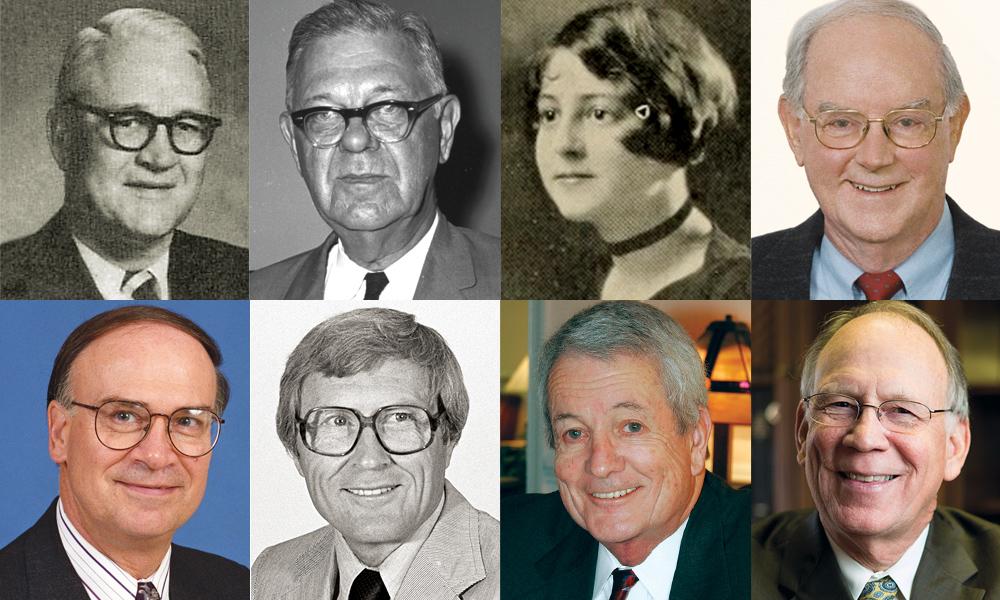 |
| Past presidents (L-R, from top): Charles Broun (1969-71), Russell Weaver (1971-85), Mary MacNeil Willis (1985), Wallace Chandler (1986-91), Donald Lemish (1991-93), Ray Sonner (1993-2001), James Richardson (2001-13), Thomas Schaeffer (2013-18) |
The early board drew heavily from local business professionals and the Board of Visitors. This remained the status quo until the 2000s, when the composition of the board changed. During the Linwood H. Rose administration, board membership broadened geographically and experientially. After his retirement from the university in 2012, Rose joined the foundation as vice president of strategic planning.
Despite a dearth of funds in 1969, the foundation began to grow right out of the gate, accepting its first gift, $2,626, from the Piedmont Trust Fund. For the next three decades, the foundation’s assets and endowment grew slowly but steadily. After 10 years, assets totaled more than $1.4 million. Near the end of the century, growth began a sharp upward trend.
By 2007, total assets exceeded $82 million and the endowment was poised to crest $50 million. Throughout the Great Recession of the early 2000s, the foundation weathered the economic downturn by making administrative adjustments and judicious investment decisions. Its success was recognized when The Wall Street Journal named the foundation the nation’s fifth-best-performing university endowment in 2007.
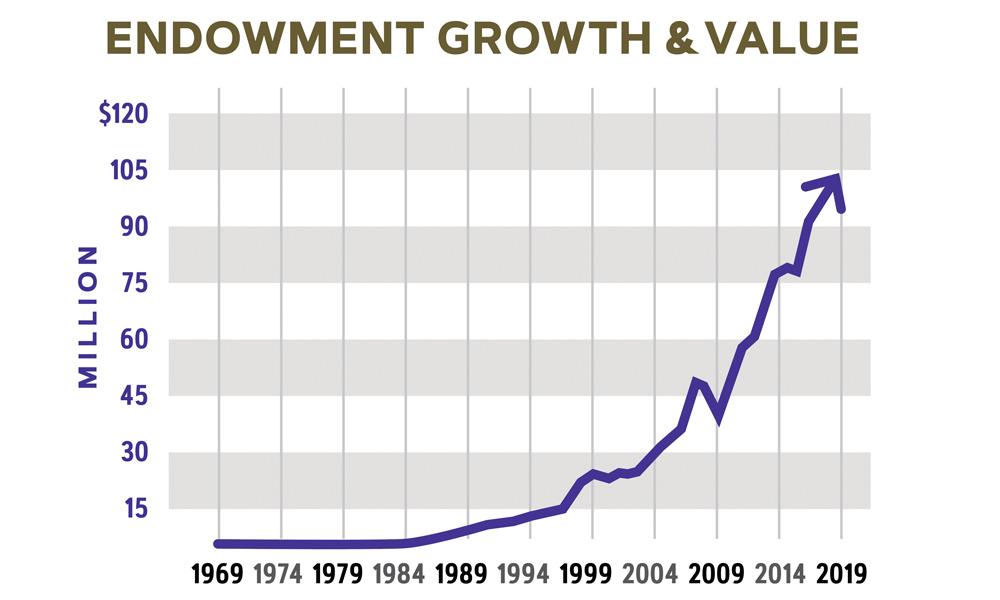 |
Throughout its history, the foundation’s ability to act independently and to respond quickly to opportunities meant that JMU had a ready partner. This flexibility was especially significant in acquiring real estate.
In 1970, the foundation purchased a large swath of land northeast of campus. This first land acquisition—now the “Village”—added 19.2 acres. The foundation continued to play a significant role in acquiring land across the next five decades. These properties included: the Hillside area of campus; the president’s home, Oakview; the old Howard Johnson’s property; WVPT; multiple lots along the west side of Main Street (where the Forbes Center for the Performing Arts is located) and the land that is now the East Campus. With foundation help, JMU’s footprint has increased by more than 150 acres.
As it approached its 50th year, the foundation was able to approve an $11 million expenditure toward the construction of the Hotel Madison and Shenandoah Valley Conference Center.
While purchasing properties and growing investments supported the university, the foundation’s influence extended far beyond deeds and ledgers.
In myriad ways, the foundation assisted the university through gifts as diverse as microscopic mineral specimens to the hulking Duke Dog statue near Bridgeforth Stadium. The foundation also managed scholarships, curated art collections, purchased scoreboards, supervised student investors, awarded faculty grants, made student loans—and even helped the Marching Royal Dukes perform in Michigan’s Pontiac Silverdome. The foundation supported the JMU Alumni Association in building a new alumni center and added classrooms when it purchased the former Harrisonburg High School.
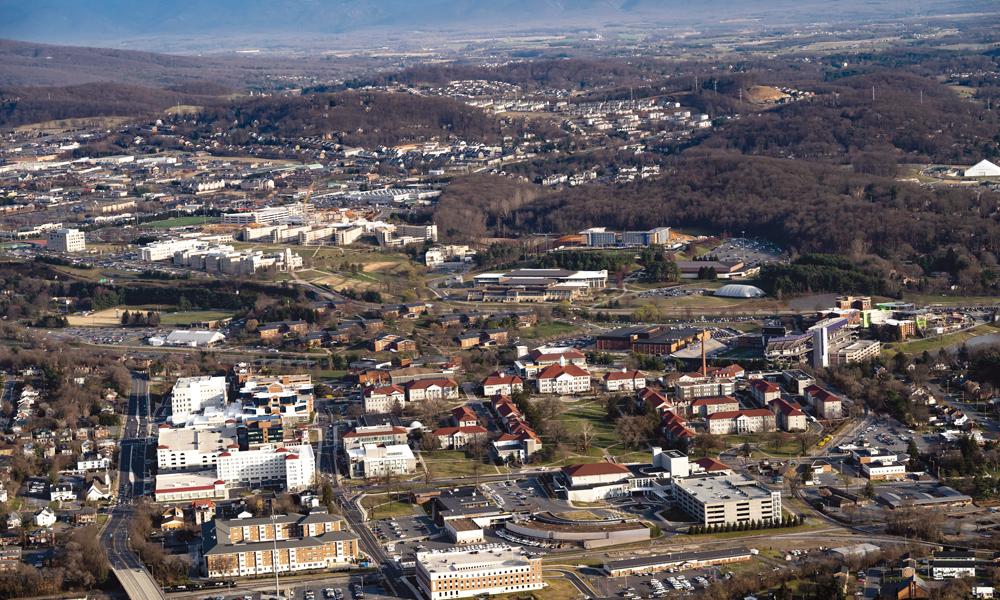 |
The foundation’s influence has also been felt personally. The first scholarship, established in 1970 in memory of Lucy Copenhaver Gunter (’32), was awarded to Lucy Howe McGavock Grubb (’71), a Wytheville, Virginia, student. With her degree, Grubb went on to a 35-year career as a dietitian.
Perhaps nowhere have scholarship outcomes been more visible than in the revitalization of Harrisonburg. In the 1980s, Barry Kelley (’83) earned a Gunter scholarship. “I’d worked all my life, and the scholarship gave me a feeling of solid self-worth, being recognized as having potential,” the Newport News, Virginia, native said. After graduating, he began transforming downtown Harrisonburg by repurposing old buildings, including Main Street’s Keezell Building—where President Julian Burruss had an office in 1908.
|
RELATED ARTICLE: |
Scholarship recipients have established themselves as audiologists, investors, band directors, missionaries, physicians, teachers, nurses, professors, engineers, scientists and many others. In addition to benefiting students, the increase in scholarships has enhanced JMU’s reputation by helping the university attract top students and pursue diversity. Today, the JMU Foundation manages more than 700 endowed scholarships.
Since 1969, the foundation has grown its total assets to exceed $167 million and its endowment to a market value of $100 million. Poised financially stronger—but no less enthusiastically—than 50 years ago, the foundation’s future is bright.
###

